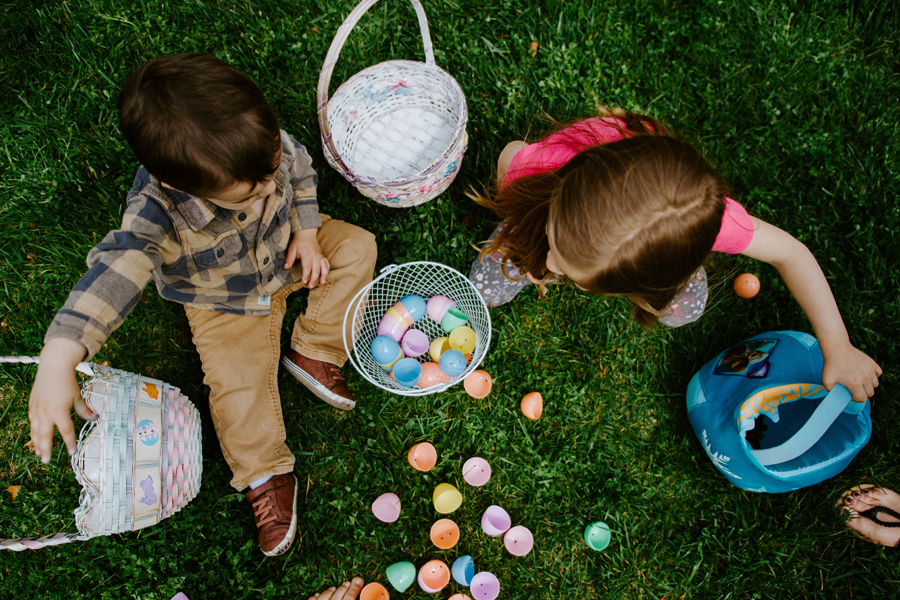Do you know the legend of the Easter Bunny? The Easter Bunny is more than just an adorable figure; it also holds many fascinating secrets. From its history to popular traditions associated with this beloved character, there are plenty of interesting facts about the Easter Bunny that will surprise you. So if you want to learn more about this charming creature and its unique place in our culture, read on as we explore the story of the Easter Bunny.
Table of Contents:
- History of the Easter Bunny
- Popular Easter Bunny Traditions
- Fun Facts About the Easter Bunny
- Conclusion
History of the Easter Bunny
A hare or rabbit’s purported capacity to lay eggs and present them as presents can be traced back to pre-Christian Germany. This belief likely stemmed from ancient pagan traditions involving fertility symbols such as rabbits and eggs. The Easter Bunny eventually became associated with Christianity when it was adopted by German immigrants in America during the 18th century. It has become a vital part of many Christian festivities globally.
The development of the Easter Bunny mythology has been heavily influenced by popular culture over time. During Victorian England, for example, stories about talking rabbits were quite common and this led to a more anthropomorphized version of the character we know today. In modern times, various animated films have further shaped our perception of what an Easter Bunny should look like – often depicted as a white rabbit wearing colorful clothes and carrying baskets full of chocolate eggs.
No matter how you choose to commemorate this beloved tradition, one thing is certain: The Easter Bunny will always remain an important symbol for families everywhere looking forward to new beginnings after winter’s chill passes away. A period of jubilation and contentment, the Easter Bunny will persist to be a piece of those treasured recollections for many generations.

Popular Easter Bunny Traditions
Easter is a period of delight and festivity, especially for families with young kids. One of the most beloved figures associated with Easter is the Easter Bunny. Decorating eggs and baskets, enjoying chocolate treats, and participating in other activities involving the Easter Bunny are popular traditions that bring joy to many households each year.

Decorating eggs and baskets for the holiday has been a tradition since ancient times. In some cultures, eggs were dyed or painted to represent rebirth or fertility during springtime celebrations. Today, it’s common for people to decorate hard-boiled eggs with colorful dyes or paint them with intricate designs. It’s also traditional to fill an Easter basket with small gifts like candy or toys (or books!) as well as decorated eggs on Easter morning.
Chocolate plays an important role in many family celebrations around this time of year too. From solid chocolate bunnies to foil-wrapped egg shapes filled with goodies – there’s something for everyone when it comes to sweet treats at Easter time. Some parents even hide eggs around their homes so that kids can go on an exciting “Easter Egg Hunt” before they sit down together for a special meal later in the day.
Fun Facts About the Easter Bunny
The Easter Bunny is often linked to the season, but there are some unexpected tidbits about it that may astound you. From its origins to its modern-day interpretations, the rabbit is an important part of this special holiday.
When it comes to interesting facts about the rabbit’s appearance and habits, did you know that rabbits have been used as symbols of fertility since ancient times? Rabbits have long been associated with fertility and new beginnings in many societies worldwide, representing the concept of regeneration. Rabbits also reproduce quickly and their ability to hide from predators makes them especially appealing for use in Easter celebrations.
Unusual customs involving the Easter Bunny can be found all over the world. For example, some countries celebrate “Easter Bunnies” which involve people dressing up like bunnies on Easter Sunday and handing out candy or small gifts to children who come knocking at their doors. In some parts of Germany, it is even believed that if a child finds a white egg hidden by an easter bunny then they will receive good luck throughout the year.
Surprisingly enough, there are connections between rabbits and Christianity too. The early Christian church adopted several pagan traditions such as using eggs during Lenten services as a reminder of Jesus’ resurrection after his death on Good Friday. As time went on these symbols evolved into what we now recognize today – including depictions of rabbits carrying baskets filled with colored eggs representing new life during this holy season.
Conclusion
The history behind why we associate bunnies with Easter continues to evolve each year, making this one tradition that has stood strong for centuries no matter how much our culture changes around us. Whether you believe in its symbolism or just enjoy celebrating with family every springtime, learning more about these fascinating creatures can help make your holiday even more meaningful.



